Jog Raj*, Hunor Farkaš, Svetlana Ćujić, Goran Grubješić, Jovana Dubajić, Zdenka Jakovčević, and Marko Vasiljević
PATENT CO, DOO., Vlade Ćetković 1A, 24 211, Mišićevo, Serbia
*Corresponding author: [email protected]
 Corn is a vital global cereal crop for both human and animal nutrition, but mycotoxin contamination poses serious health risks, including toxic and immunosuppressive effects.
Corn is a vital global cereal crop for both human and animal nutrition, but mycotoxin contamination poses serious health risks, including toxic and immunosuppressive effects.
 Therefore, in recent decades, there has been increased focus on mycotoxins due to stricter regulations and improved detection methods.
Therefore, in recent decades, there has been increased focus on mycotoxins due to stricter regulations and improved detection methods.
 The aim of the present study was to quantify mycotoxins in corn samples collected from different regions of Austria, Greece, Italy, Poland, and Serbia, using a multimycotoxin method based on LC-MS/MS triple quadrupole (Agilent 6460 series).
The aim of the present study was to quantify mycotoxins in corn samples collected from different regions of Austria, Greece, Italy, Poland, and Serbia, using a multimycotoxin method based on LC-MS/MS triple quadrupole (Agilent 6460 series).
METHOD 
Corn samples were delivered to the PATENT CO. laboratory between September 2024 and February 2025.
These samples were analysed using an LC-MS/MS-based method (Farkaš et al., 2024) for the following mycotoxins:
European Union (EU)-regulated and related mycotoxins
 Aflatoxins (AFB1, AFB2, AFG1, AFG2)
Aflatoxins (AFB1, AFB2, AFG1, AFG2) Deoxynivalenol (DON)
Deoxynivalenol (DON) Fumonisins (FB1, FB2, FB3)
Fumonisins (FB1, FB2, FB3) HT-2 toxin
HT-2 toxin Ochratoxin A (OTA)
Ochratoxin A (OTA) T-2 toxin
T-2 toxin Zearalenone (ZEN)
Zearalenone (ZEN)
Emerging mycotoxins
 Beauvericin (BEA)
Beauvericin (BEA) Enniatins (ENNA, ENNA1, ENNB, ENNB1)
Enniatins (ENNA, ENNA1, ENNB, ENNB1) Fusaric acid (FA)
Fusaric acid (FA) Moniliformin (MON)
Moniliformin (MON)
Other mycotoxins
 15-acetiyl deoxynivalenol (15-ADON)
15-acetiyl deoxynivalenol (15-ADON) 3-acetyl deoxynivalenol (3-ADON)
3-acetyl deoxynivalenol (3-ADON) Deoxynivalenol-3-glucoside (D-3-G)
Deoxynivalenol-3-glucoside (D-3-G) Diacetoxyscirpenol (DAS)
Diacetoxyscirpenol (DAS) Neosolaniol (NEO)
Neosolaniol (NEO) Nivalenol (NIV)
Nivalenol (NIV) Zearalanone (ZAN)
Zearalanone (ZAN) α-zearalenol (α-ZEL)
α-zearalenol (α-ZEL) β-zearalenol (β-ZEL)
β-zearalenol (β-ZEL)
The mycotoxin results were expressed in μg/kg (parts per billion, ppb), based on a feed moisture content of 12 %.

RESULTS 
AUSTRIA ![]()
All corn samples tested from different regions of Austria in 2024 were contaminated with more than three types of mycotoxins.
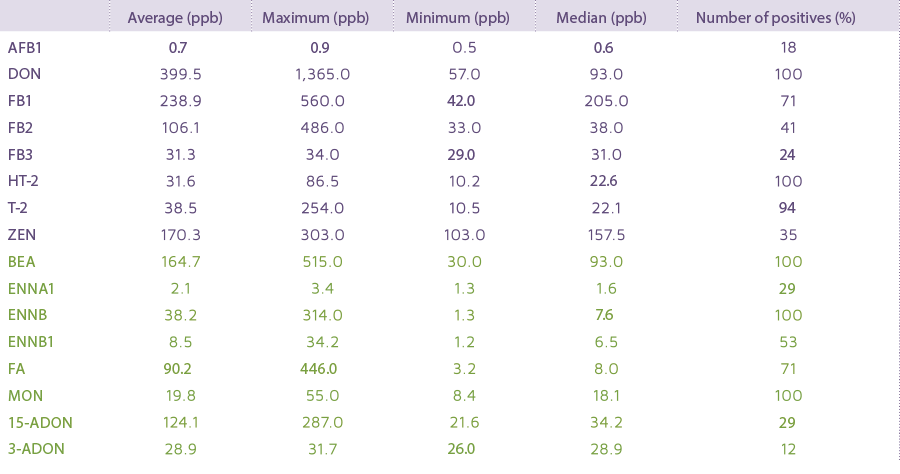
Table 1. Mycotoxin contamination levels (ppb) in corn samples from Austria in 2024.
GREECE 
In the 2024 survey of corn samples from Greece, 100 % were contaminated with more than one type of mycotoxin.
⇰ Among these, 6 % of samples contained two types of mycotoxins, another 6 % contained three types, and the remaining 88 % contained more than three types of mycotoxins (Figure 1).
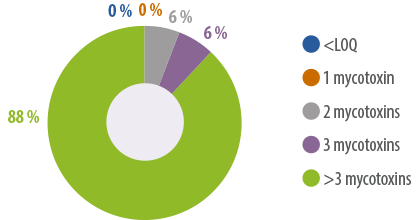
Figure 1. Number of mycotoxins (%) detected in 2024 harvested corn in Greece.
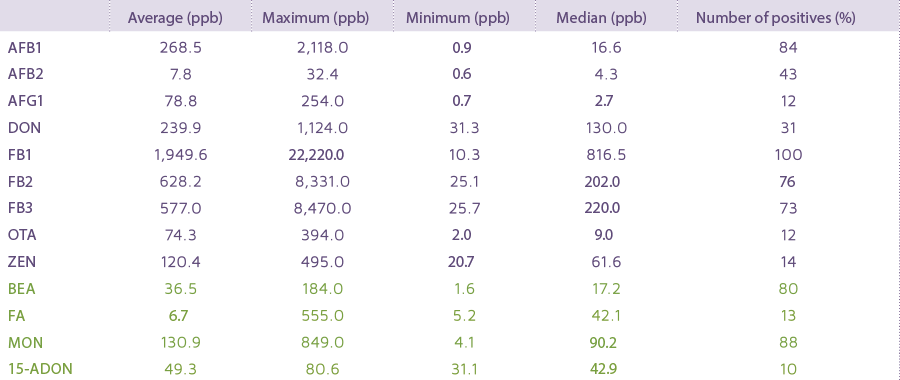
Table 2. Mycotoxin contamination levels (ppb) in corn samples from Greece in 2024.

ITALY 
In the 2024 survey of corn samples from different regions of Italy, 100 % were contaminated with more than three types of mycotoxins.
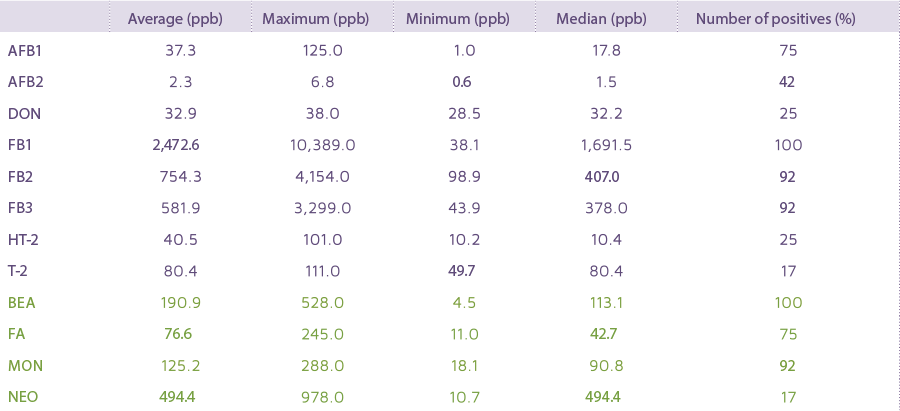
Table 3. Mycotoxin contamination levels (ppb) in corn samples from Italy in 2024.

POLOND 
In the 2024 survey of corn samples from Poland, 100 % were contaminated with more than three types of mycotoxins per sample.
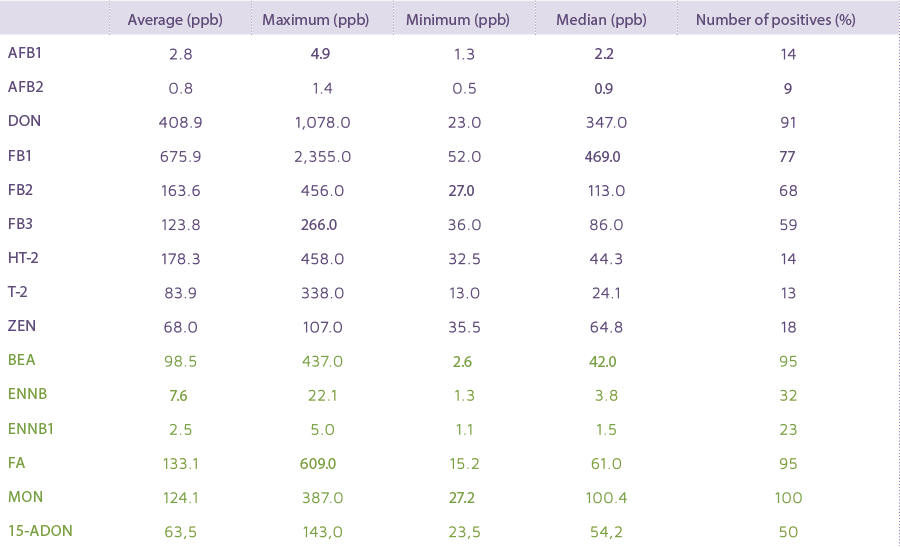
Tabla 4. Nivel de contaminación por micotoxinas (ppb) en muestras de maíz de Polonia en 2024.

SERBIA 
In the 2024 survey of harvested corn samples from Serbia, 93 % were contaminated with one or more types of mycotoxins.
⇰ Among these, 16 % of the samples contained one type of mycotoxin, 9 % contained two, 11 % contained three, and 57 % contained more than three types of mycotoxins per sample (Figure 2).
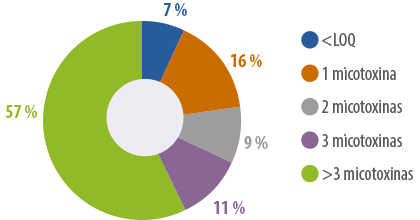
Figure 2. Number of mycotoxins (%) detected in 2024 harvested corn in Serbia.

Table 5. Mycotoxin contamination levels (ppb) in corn samples from Serbia in 2024.

CONCLUSIONS 
In the 2024 corn survey, samples were collected from Austria, Greece, Italy, Poland, and Serbia and analysed for EU-regulated, emerging, and other mycotoxins using an LC-MS/MS-based method.
The country-specific mycotoxin results are presented in Table 6.
The results showed that 77 % of samples from Serbia and 100 % of corn samples from the remaining four European countries were contaminated with more than one type of mycotoxin.
 Aflatoxins, fumonisins, BEA, FA, and MON were the main mycotoxins detected in majority of corn samples from these countries.
Aflatoxins, fumonisins, BEA, FA, and MON were the main mycotoxins detected in majority of corn samples from these countries.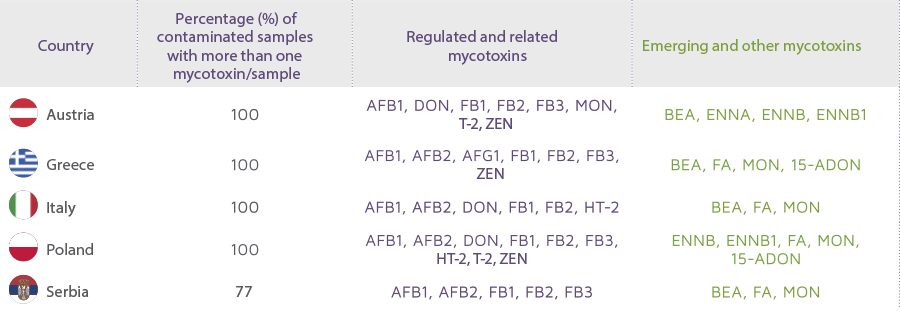
Table 6. Co-occurrence of regulated, emerging, and other mycotoxins in corn samples collected in 2024 from Austria, Greece, Italy, Poland, and Serbia. The table shows the percentage of samples contaminated with more than one type of mycotoxin, as well as the specific mycotoxins detected in each country.
This study provides valuable insights into the co-occurrence and co-contamination of aflatoxins, emerging mycotoxins, and Fusarium-produced mycotoxins in the majority of 2024 harvested corn samples from five countries.
![]() Aflatoxins—particularly AFB1—posed the most significant threat, frequently exceeding regulatory limits for both human and animal consumption.
Aflatoxins—particularly AFB1—posed the most significant threat, frequently exceeding regulatory limits for both human and animal consumption.
![]() Fumonisins have also remained a critical concern in recent years, with elevated levels potentially exacerbated by warmer temperatures during the growing season.
Fumonisins have also remained a critical concern in recent years, with elevated levels potentially exacerbated by warmer temperatures during the growing season.
 Co-occurrence has significant implications for food and feed safety, as combined exposure to multiple mycotoxins can result in synergistic toxic effects, increasing the risk to both human and animal health.
Co-occurrence has significant implications for food and feed safety, as combined exposure to multiple mycotoxins can result in synergistic toxic effects, increasing the risk to both human and animal health.
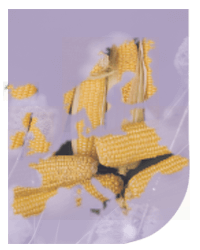
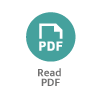

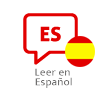
 Micotoxicosis prevention
Micotoxicosis prevention